In early 2018, during the launch of the Sauber C37 – the first of the Swiss team’s cars to race under the Alfa Romeo serpent – I asked Peter Sauber whether he felt a pang of regret that the family name would no longer be represented on the Formula 1 grid.
“No,” he responded immediately. “That is not new. Sauber has in the past built and raced cars for manufacturers. We did it with Mercedes, we did it for BMW. This is just another step along the same process,” he explained in reference to the world championship sports car project with Mercedes and a BMW M1 group five project respectively, plus, of course, the joint F1 venture which produced a victory in the 2008 Canadian Grand Prix for Robert Kubica.The team and entrant name remained as Sauber Motorsport; however, from the following year the name was changed to Alfa Romeo Racing, with Kubica-linked team sponsor Orlen from 2020 given secondary naming rights, a convention that continues this year. Lest there are, though, any doubts about the culture of the team, it is very much Sauber – as the ‘C’ nomenclature, after Sauber’s wife Christiane, attests,
All this means that the only full-on Swiss team in F1 history bears the weighty responsibility of officially representing one of the world’s most hallowed and emotional automotive brands on the most visible global of sporting platforms, a tribe who proudly refer to themselves as “Alfisti”. No other automotive brand has that honour, not even Ferrari fans, whose most rabid fans are known as “the tifosi”.
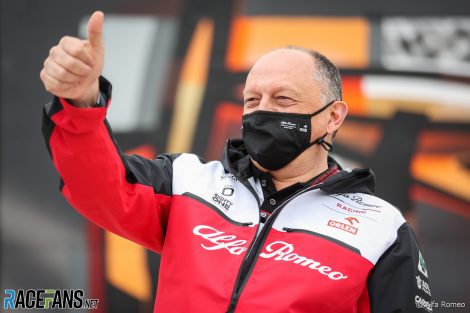
There had been fears that the partnership would falter after Marchionne’s untimely passing following surgery in July 2018 and again after the recent merger between FCA and Peugeot Group to form Stellantis, but the renaming went ahead in 2019 and the deal extended in July this year a for a projected three years – as per reasons outlined during our exclusive interview with Alfa Romeo’s (ex-Peugeot) CEO Jean-Phillipe Imparato.
At the time we had already revealed that multiple grand prix winner Valtteri Bottas was heading to Alfa Romeo for 2022 – official confirmation took two months – so it was clear that the team has big ambitions for Formula 1’s ‘new era’, which brings with it not only tighter regulation’s but the first cars to be designed under F1’s $145m budget cap, which clearly favours the mid-grid rather than the front-runners.
Still, this season has been a major disappointment – despite closing the lap time gap to the front runners the team has slipped back in the order. Williams took solid points hauls over the last five races, while Alfa Romeo scored only twice via Kimi Raikkonen.
Advert | Become a RaceFans supporter and
It is against this background that I chat to team principal and long-time junior series team boss Frederic Vasseur in his office in Hinwil – an industrial town with a population of 12,000 situated 30 kilometres south-east of Zürich – after a full tour of the factory.
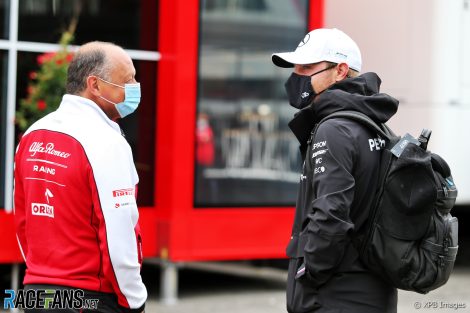
Next year Vasseur will be reunited with Bottas, who he took to the GP3 (now Formula 3) championship in 2011. He points to the 32-year-old’s record as being consistently one of the top three drivers in the series over the past four years, and a close match for Lewis Hamilton in the same car, as the rationale for signing him.
“I think he has good momentum in his career and he was looking for a project where he could be the leader,” says Vasseur. “We are looking for a leader for the next couple of years, and we can build up a project around him.
“If you have look at the last 25 years, in F1 all the good projects have been built around a driver, always. You have Renault with Alonso, Red Bull with Vettel, Ferrari with Schumacher, Mercedes with Lewis. We need to build our project around someone, and I’m convinced that Valtteri is this one.
Vasseur’s words imply a long-term mutual commitment, which he does not deny: “It was part of the discussion because both sides are looking for something similar, while Valtteri was also looking for stability. It’s not a matter of a ‘comfort zone’, it’s just to be able to have long term commitment.
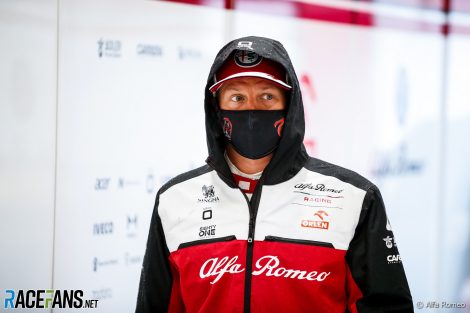
The word “project”, though implies some big picture thinking. Does he believe Alfa Romeo, a team that in the past came close but never quite delivered, will be able to match the top teams during the ‘new era’?
“We made a decent step forward in the last 24 months. It’s not always obvious in term of results. We managed to close the gap on the front-runners in terms of percentages, which to me is important because it’s a validation of the performance of the team.
“We moved from [a headcount of] 250 to a bit more than 500 over the last two or three years. Now it’s [no longer] a matter of numbers, it’s a matter of small adjustments that we will pay attention to during the next 12 months, finetuning the system and perhaps changing one or two positions.”
Advert | Become a RaceFans supporter and
Successful F1 teams operate to the ‘four M’ principle: management, manpower, machinery and – last but not least – money. Does Sauber have all the building blocks in place to mount a sustained (and sustainable) challenge?
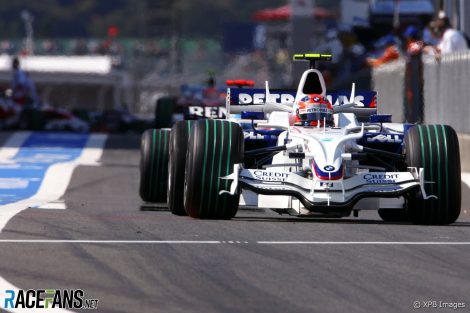
“On the on the four pillars you mentioned, I think we did a decent step over the last two or three years, but it’s never enough. This is the DNA of competition because everybody else is trying to improve and I don’t think one day I will say, ‘Ok, I am relaxed about this level’.”
During the (2006-9) BMW era the folk in Hinwil harboured high hopes of titles, but where does the team stand now in terms of expectations, what is a realistic level for what is still an independent team, albeit one bearing the illustrious Alfa Romeo warpaint.
“We have to dream, but we have to be realistic. The final target of this kind of challenge must be that we have to win at least a race,” Vasseur says, adding a reference to Alpine’s unexpected victory in Hungary. “This is good for the company, they showed that it is possible.”
“In the short term, to imagine to win a championship is a bit unrealistic because the technology [of the big teams] is different. Even if you develop the car under the same cost cap and with the same restrictions, they are one step ahead in terms of technology, and we’ll have to compensate for that.
“But I think that the new regulations could be an opportunity because we are used to developing the car with this kind of budget, when the big teams are not. They will have to impose a lot of restrictions [on themselves]. This could lead to frustration whereas we are more in a comfort zone because we always knew how to apply the best usage of money.
“This will change the DNA of Formula 1 because previously the target was to find enough sponsors to develop the car with your resources, with your manpower. Now this not case anymore, [now] have to do the best usage of your budget, which means the championship is completely different and we are probably in the right window.”
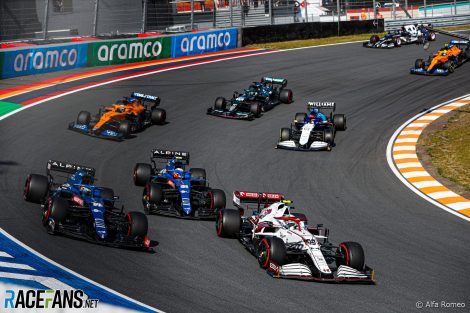
Sauber is, of course, a race team that builds its own chassis but buys in items such as powertrains. Is it possible to build a world championship-winning project while being reliant upon another team for crucial hardware?
“Red Bull proved it is possible, McLaren were in front of Renault,” he says without hesitation, citing two examples of customers beating their supplier teams, the former winning four double titles in the process.
Which raises the question: How committed is Sauber to Ferrari (and vice versa), particularly given that after Marchionne’s death and the Stellantis merger Alfa Romeo is no longer a ‘sister’ but effectively a ‘cousin’? There is talk that the need to run a Ferrari driver could be dropped, that Giovinazzi’s place in the team is not assured.
“We are fully, fully, fully committed to Ferrari,” he stresses, adding, “We have a multi-year deal that [runs] in line with the regulations.”
That takes the deal through to the end of 2025 and possibly a year longer should the engine working group decide to extend the current timeframe. “To change the engine during the [current regulatory period] is in any event unrealistic because you would have to spend a fortune to adapt the car, the chassis to the engine or the engine to the chassis and all the usage of the budget for this you can’t use for development.
“It means that from my point of view, except in the case of force majeure, it’s quite unrealistic to imagine that someone will change engine suppliers during the course of the [current] regulations.”
A perennially thorny topic of is whether the team is for sale. The latest rumours link the Andretti family to a purchase.
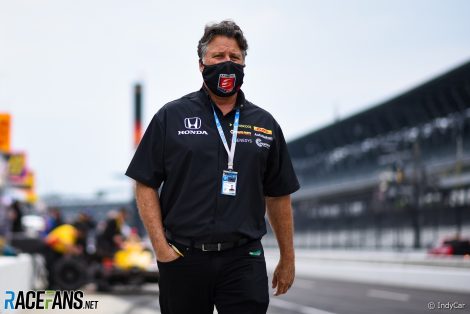
“I have not met with any Andrettis,” he says when pushed, then winking as he says, “This business is full of rumours.”
That goes for another topic occupying his mind at the moment: The identity of Bottas’ team mate for 2022. “Last week there were rumours that Bottas had signed for Williams and that we had signed [Formula E champion Nyck] de Vries…”
De Vries – Mercedes junior plus champion in Formula E and Formula 2 – is among those tipped for the drive. So are Chinese F2 racer Guanyu Zhou, who is being pushed hard by F1 bosses desperate for more diversity at the top level, and French F2 hotshot Theo Pourchaire. Giovinazzi’s chances of retaining his seat are not lost, but every hopeful around is linked to final space on the grid for the 2022 F1 season.
“I’m not in a rush to take a decision,” says Vasseur. “If you ever look on the global picture, I want to be focused on what we are doing to give them time to show what they can do. All of them.”
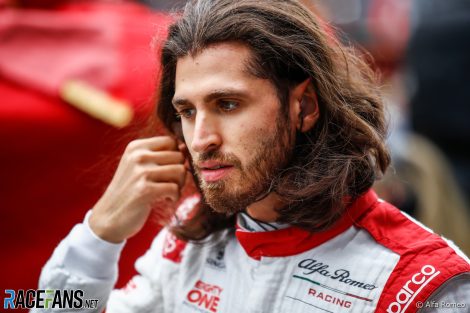
Thus Vasseur has the luxury of time, secure in the knowledge that none of the drivers on his list – whom he will not name to prevent speculation and avoid disappointment – are not going anywhere else anytime soon.
With that he is off to a meeting – one called to discuss the emerging Sauber Technologies division, which monetises F1 tech, and has found increasing traction not only in Switzerland but in the global automotive industry. Peter Sauber can be proud of the company he founded, even if it is in other hands and racing under Italian colours. It clearly has a solid future on and off track.
RacingLines
- The year of sprints, ‘the show’ – and rising stock: A political review of the 2021 F1 season
- The problems of perception the FIA must address after the Abu Dhabi row
- Why the budget cap could be F1’s next battleground between Mercedes and Red Bull
- Todt defied expectations as president – now he plans to “disappear” from FIA
- Sir Frank Williams: A personal appreciation of a true racer




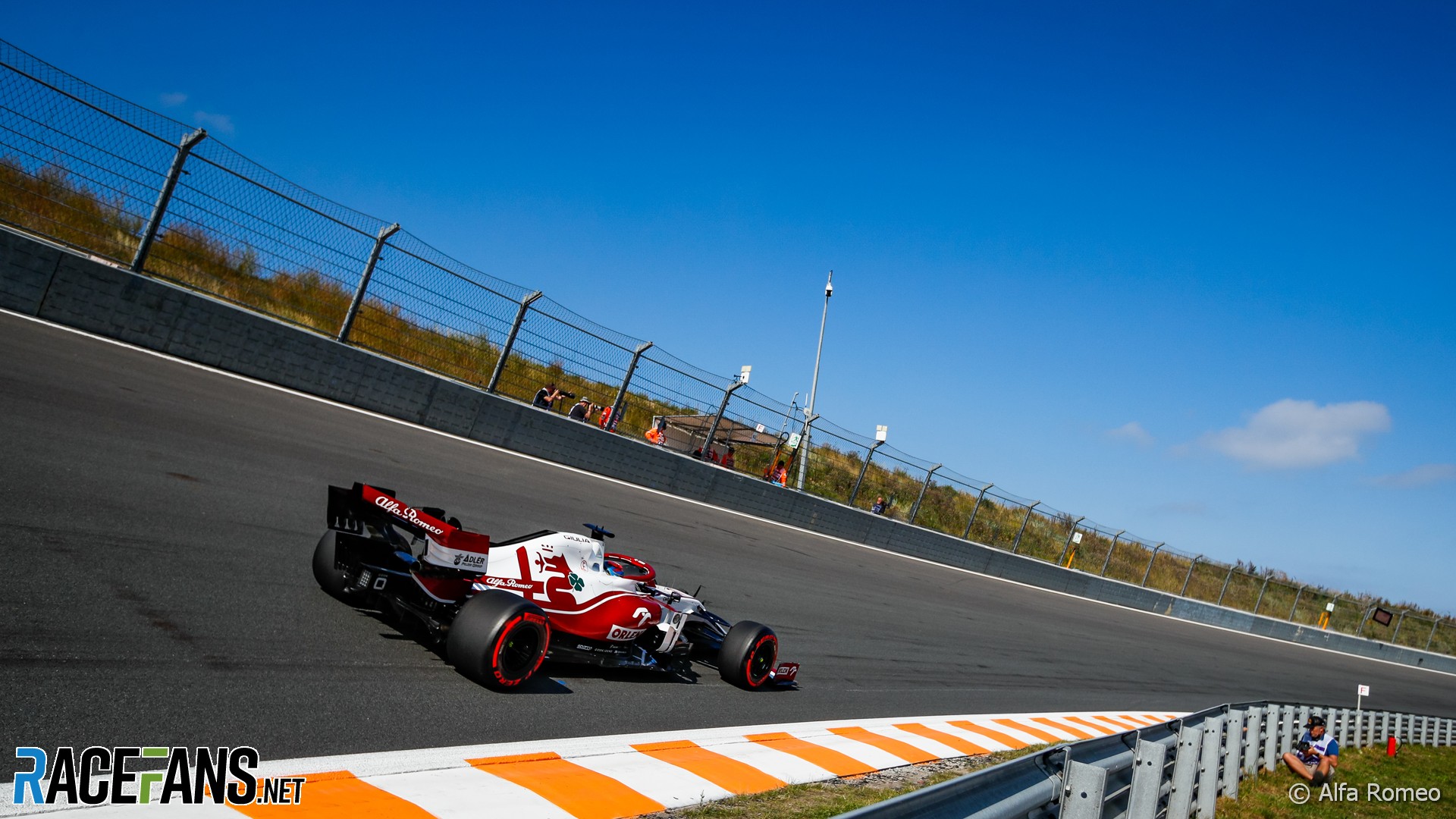
Proesterchen (@proesterchen)
29th September 2021, 12:07
That is some of the most out-of-this-world nonsense I have ever heard.
So … is Fred delusional or pathological?
nickthegreek (@nickthegreek)
29th September 2021, 12:52
care to support your opinion with arguments? it seems to me like he’s right about that
amian
29th September 2021, 13:45
@nickthegreek
To see a causal relationship between hiring a very good driver and bulding a winning team is nonsense, as it totally ignores every instance of when it didn’t bring success at all. Best examples:
– 1997 – Arrows with Damon Hill
– 1999-2003 – BAR with Villeneuve
– 2015-2018 – McLaren with Alonso
Very good or even great drivers have been driving poor cars in F1 for ever. And poor F1 teams have been building poor cars despite having a great driver for ever as well.
You either are fortunate to build a winning car or you don’t win, there’s little more to it. Every drivers in the field would be winning races given a Mercedes. Just give them a Mercedes. The 2009 season should remind you what that looks like.
jff
29th September 2021, 15:37
I think these examples support the original hypothesis :P
PMP
29th September 2021, 19:35
I think it makes sense: if you have a hungry, motivated and fast driver driving development and your team can deliver, it sounds like a winning combination to me.
Proesterchen (@proesterchen)
29th September 2021, 20:46
Where do I begin?
“Ferrari with Schumacher” wasn’t even a project. It was Schumacher and the engineering group around Rory Byrne that initially came together at Benetton, then got brought into Maranello as a team and build competitive cars from the early nineties to the late naughts.
Would Renault / Alonso even be a thing if Mosley hadn’t gifted the 2005 championships to Michelin and its teams? It’s not like they were close to Ferrari / Schumacher in 2004, they were still level with the other Michelin runners in 2005, had a nice uptick to beat Ferrari in 2006, and completely slumped ever since. (with or without Fernando)
Red Bull / Vettel wasn’t a project, it was the second-best engineering group around Adrian Newey taking over after Rory stopped playing. Seb certainly was the better of the drivers and took full advantage of the opportunity, but Niki contracted Adrian for a reason, didn’t he?
And Mercedes / Hamilton is the worst of them all. If anything, Brackley post-2009 was a Haug and/or Rosberg and/or Schumacher project that didn’t come to fruition – middling cars very much in the Brackley tradition + competitive engines across the field resulting in limited success.
Then Haug and Schumacher got booted, the Austrians bought parts of the team and brought in Hamilton only to get pummeled by Red Bull and Vettel, again.
So the fabled Mercedes / Hamilton “project” was basically waiting for Brixworth to deliver a dominant PU, everyone else to fail embarrassingly, and on top of that have the FIA kneecap the competition with an awful token system preventing others from catching up.
If anything, all the examples Fred has listed show that what you need for success as a team is the best engineering group building your car, preferably with the competition failing miserably and repeatedly and the regulators supporting you occasionally.
Oh, a driver can of course help. Schumacher, Alonso and Vettel have all shown that they could take cars to successes that their teammates could never dream of. Heck, even Hamilton looks impressive whenever he gets paired with a fin.
frood19 (@frood19)
30th September 2021, 7:19
Hamilton has looked impressive against all his team mates.
PMP
30th September 2021, 10:09
Individual players can make a difference in any team sport. They can shape the mentality and ambition of any team. If the rest of the team can answer the call, big things start happening.
And then there is continuity.. development is on a continuum as long as the driver stays. They don’t have to start from zero after a line-up change, but perhaps from 90% isn’t far fetched as a new driver might need different things from a car and everybody must learn to know each other’s personalities and ways of working. So IMO there is a gap in those situations, that some teams handle more efficiently than others.
Balue (@balue)
29th September 2021, 14:07
Why do you dismiss this out of hand? I found this very interesting, and maybe Vasseur is onto something. That it is Bottas, is also interesting, but wish they could pull it off now.
I know Vasseur is known as smiley, but the optimism seems rooted in reality as there would not be much need for PR speak at this point.
Jere (@jerejj)
29th September 2021, 12:30
I can only really see Zhou as Bottas’ next teammate since a big sponsor backing from China is hard to reject.
Admittedly, I wish Shwartzman gets an F1 chance, but Ferrari losing a say on Alfa Romeo’s driver choices automatically reduced his hope + F2 performance.
Based on Vasseur’s words earlier this month, an announcement could come soon. We shall wait and see.
JohnH (@johnrkh)
29th September 2021, 12:45
Yeah nice but as a long time Alfa owner I feel comfortable in saying most of us aren’t all that fussed, as we know it’s not an Alfa Romeo. The politics are such that Alfa will never again be allowed to challenge Ferrari on the track.
pastaman
29th September 2021, 13:00
“tifosi” are fans, and not necessarily for Ferrari. “Ferraristi” are specifically Ferrari fans.
nickthegreek (@nickthegreek)
29th September 2021, 13:09
if you are Italian yes but believe me to the rest of the world, “tifosi” = Ferrari fans
every broadcast I’ve seen (including the English speaking ones of BBC, Sky & F1 TV) refers to Ferrari fans as “tifosi”
Jon Snow
29th September 2021, 13:35
well football spectators used to be called tifosi too, especially in Serie A boom in the 90s.
the word is to refer for a sports fan. narrowing it down to a team/brand is akin to calling a car ‘a Toyota’
pastaman
29th September 2021, 15:31
@nickthegreek I don’t disagree with you, however the article made some claims that are incorrect to this regard.
Rufernan (@rufernan)
29th September 2021, 14:45
Unlikely. For Alfa to succeed, others have to fail relative to them. Unless the bar is permanently set at lower mid-field.
Chris
29th September 2021, 15:02
Nice article, it’d be nice to see the Alfas further into the midfield. Every team seems hopeful for 2022 but surely at least one team is going to drop the ball massively?
Ducatisti?
Kurt Laguna
29th September 2021, 16:16
Another great article, who knew that ultimately the Tetra Pak heir is the owner? I continue to be amazed at the quality of the articles on the Racefans.net site. This web site provides a level of detail that is very much missing on other F1 sites. Racefans reminds me of the old Grand Prix International magazines that I use to buy and treasured for the behind the scenes look at F1, it’s cars, it’s people and its drivers. Keep up the great and detailed articles………much enjoyed!!
Dan Rooke (@geekzilla9000)
29th September 2021, 18:58
I can’t help but think that the team with the best early advantage next season will be the one to have found the best loophole and meet the regulations in the most innovative and creative way. The power units seem to have a level of parity now, some teams have stronger line-ups than others – the greatest unknown is who will interpret the technical regulations with best the engineering ‘artistry’ to have something nobody else thought of.
Engineering excellence and innovation is at the heart of F1, it’s a team sport, I can’t wait to see next year’s cars!
Jay Menon (@jaymenon10)
30th September 2021, 1:42
I suspect Sauber will switch to Renault PUs in the coming years. I think Stellantis will eventually pull the plug on promoting Alfa, the brand isnt selling well. The quality and reliability is even worse. For Alfa fans, the poor reliability is a quirk that is part and parcel of owning an Alfa, but for the general public, not so much I believe. Don’t get me wrong, an Alfa (a Giiulia if I’m lucky, or a 155 if the stars align) firmly sits atop my bucket list.
What we dont know is how the Stellantis contract influences the engine supply. The financial incentive of field a Ferrari academy driver will probably also be a factor.
Pod
30th September 2021, 7:01
I agree about Alfa. Carlos Tavares is a racer but he’s also a good businessman, and he will recognize that it’s a waste of Stellantis’ limited resources, particularly wasted on Alfa Romeo as a brand.
I was at Montreal with Stewart GP when Ford announced they were buying the team and converting it to Jaguar. I told Jac Nasser it was foolish, both buying the team but also leveraging all that spending on the Jaguar brand. It was an epically poor decision, amongst the many bad ones made by Nasser. I also congratulated Jackie for selling his team to Ford, a team which Jackie started using Ford’s money and technical resources. Jackie laughed.
BasCB (@bascb)
30th September 2021, 11:58
I agree with you that one has to wonder how long a brand like Alfa Romeo can be spending on being the main sponsor of an F1 team, given how little their sales volume is nowadays @jaymenon10.
On the other hand, maybe the money spent on F1 is not that much to keep having the brand around and having car enthusiasts aware of it until Stellantis can get around to making it the electric performance brand they seem to envision for the longer term future – see the really nice interview with the Alfa Romeo top guy.
Trayambak Chakravarty (@major-dev)
30th September 2021, 7:06
Excellent article once again, although
This part seems like a mistake?
BasCB (@bascb)
30th September 2021, 11:59
Why @major-devev?
BasCB (@bascb)
30th September 2021, 11:59
sorry, that should have been @major-dev
Asanator (@asanator)
30th September 2021, 13:01
@bascb
then
confused me too.